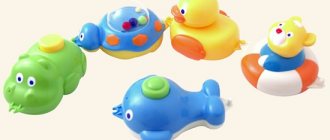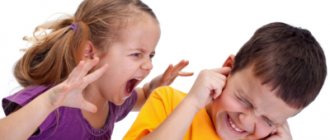Why does a child throw his head back?
The reasons may vary. Some of them require consultation with a doctor, others do not pose a danger to children and do not require medical intervention.
If a baby throws his head back in his sleep, there is no need to worry: up to 4 months this is not a deviation or a developmental anomaly. You should be wary only in situations where other unpleasant symptoms are noted. Children under one year old adapt to changed conditions, adapt to the world around them; a newborn often throws his head back out of comfort.
The problem may arise due to birth injuries in which the neck or back was damaged in the upper part. Damage occurs especially often if the baby was born by caesarean section and special forceps were used to remove it.
Neurological pathologies are also possible. A child may arch in cases where he has increased muscle tone, intracranial pressure, or lacks oxygen.
Safe reasons may be observed. If one of the parents likes to sleep in a similar position, the child copies the position.
Sometimes a child sleeps with his head thrown back due to tantrums. If the child is not sleeping, he can take a similar position when trying to roll over: this is how the baby helps himself to make the movement.
Why does a baby arch and cry during feeding?
You can often hear from young parents that the baby bends over and starts crying during feeding. In this case, it is important to understand why the mood change occurs and how to behave in this situation.
The child is still too young to tell his mother about his unpleasant feelings. Therefore, she must keep in mind the possible reasons why the baby cries and arches during feeding in order to take the necessary measures.
Colic
It happens that the baby cries and arches due to intestinal colic. Pain in the abdominal area mainly affects infants aged 1 to 4 months. Colic can be identified by the following symptoms:
- the baby constantly tries to press his legs closer to his tummy;
- he has gas.
You can relieve the stabbing pain a little by using:
- decoctions of fennel and dill;
- prebiotics and probiotics;
- bifidobacteria and lactobacilli.
It is useful to do a light tummy massage.
To prevent colic from recurring, adhere to the following rules:
- Feed your baby only when he asks. This will have a positive effect on the baby’s digestive and nervous system.
- Eliminate coffee drinks, kale dishes and dairy products from your diet.
- If the time has come to transfer your baby to artificial feeding, give him food often and in small portions.
- Try to protect your baby from any noise during feeding.
- To stop your child from screaming and arching, bathe him in warm water.
- Help your baby provoke the release of gas by pressing his legs to his tummy (he will quickly understand why you are doing this, and in the future, if necessary, he will begin to do this on his own).
- Consult your pediatrician so that he can teach you how to properly massage the abdomen and prescribe medication.
Pain in the mouth and throat
The appearance of discomfort and pain in the throat and mouth can also cause a baby to cry during feeding. Unpleasant sensations can be symptoms of thrush and pharyngitis.
Pay attention to the condition of your baby's sinuses: if they are clogged, eating becomes difficult or even impossible.
Increased intracranial pressure
In addition to the fact that the child cries and arches, increased intracranial pressure is characterized by:
- frequent regurgitation;
- lethargy;
- slight weight gain;
- enlarged fontanelle;
- a strongly pronounced venous network on the head.
If at least half of these symptoms are detected, you should consult a pediatric neurologist.
Curiosity
The baby does not always arch during feeding if he is dissatisfied with something. It happens that kids are distracted due to banal curiosity: they are interested in what is happening behind them - for example, if loud music suddenly starts playing or other extraneous loud sounds appear.
How to deal with this? Just let the baby satisfy all his curiosity, after which he will calm down and continue eating.
Source: https://grudnichky.ru/pitanie/rebenok-pri-kormlenii-vygibaetsya-i-plachet.html
Whims or hypertonicity - how to determine
To understand why a baby throws his head back during sleep, you need to pay attention to the accompanying symptoms.
Hypertonicity is manifested by frequent regurgitation and decreased appetite. The baby often cries, worries, gets irritated, and rarely smiles. Healthy children sleep not only on their backs: the baby can fall asleep on his side or on his tummy; tilting back is infrequent and does not last too long. Possible blueness of the nasolabial triangle when tilted back, trembling in the chin.
You can also check for hypertension using special procedures. The child should be placed on his back. Then slowly, carefully raise your head so that your chin points towards your chest. With hypertonicity, the adult will feel resistance from the baby. There is another method. The baby is placed on his stomach. In this case, increased tone is manifested by raised shoulders, the baby throws his head back strongly. It is often accompanied by torticollis, so you should pay attention to which direction the head deviates.
If you do not get rid of the increased tone in a timely manner, a lag in physical and mental development is added. Children with disabilities later learn to crawl, talk, sit up, and walk.
Prevention of infant head tilt and hypertonicity
It is important to avoid lack of sleep and excessive fatigue. You need to put your baby down when signs of fatigue appear. To find out whether the baby sleeps enough time, you can use special tables with norms for babies of different ages. It is necessary to feed the baby in a timely manner, change his diapers in order to reduce anxiety and not create excessive stress.
If your child throws his head back in his sleep, you need to check the conditions in which he sleeps. Children under one year old do not need a pillow. There should be no foreign objects in the bed, including toys. Before putting the baby to bed, the room should be ventilated.
A favorable psychological environment will also help prevent tilting. If the mother is calm and balanced, the child will also be less irritable. Children at an early age understand well the emotions of others and are sensitive to them. It is important to control intonation with the baby: do not shout or sort things out. You can also use your voice to calm, speak quietly, gently: this will help the baby relax.
A woman should take precautions during pregnancy. It is important to lead a healthy lifestyle, follow your doctor’s recommendations, and walk a lot in the fresh air. It is better to prepare in advance for pregnancy and childbirth to reduce the risk of developing various abnormalities.
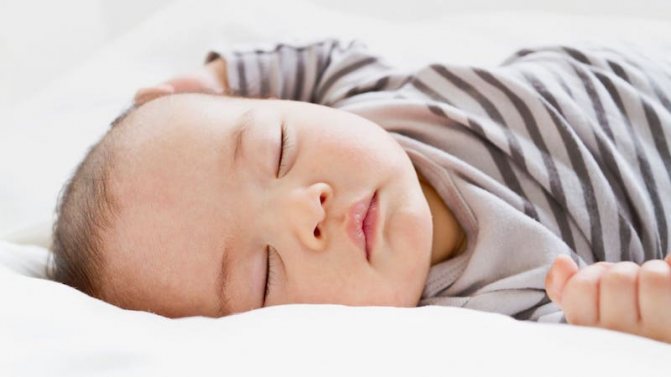
Why does a child throw his head back
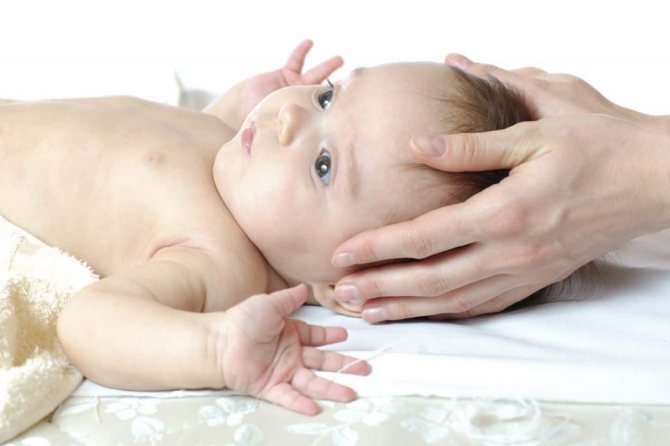
Why does a child throw his head back
What could be the reasons why a baby arches and throws his head back? They can manifest themselves in pathology of the musculoskeletal system (cerebral palsy, muscle hypertonicity, congenital torticollis). Serious abnormalities in the functioning of the nervous system that appeared during birth or intrauterine injuries (hematoma, underweight or excess weight, obstetric care using forceps, hypoxia). The consequence may be intracranial pressure in the infant. This is expressed as follows:
- The appearance of blue discoloration in the area of the nasolabial fold.
- Decreased or increased tone.
- Chin tremors and cramps.
- Accelerated asymmetrical increase in the upper part of the head.
- Strabismus (without taking into account heredity)
- Restlessness in the baby’s behavior, irritability, which makes his sleep intermittent and superficial.
Why does a child throw his head back in his sleep?
The baby can lie with his head thrown back, learning to roll over to his side in order to acquire new skills. If parents are concerned that their child's head is thrown back in his sleep, they need to analyze the sleep position of his closest relatives, since it is inherited. There is no reason to worry when the head is thrown back if the baby is sleeping. The reason for throwing back the head may be ordinary hysteria, which has nothing to do with diseases of the nervous system, since it is not sufficiently developed at this age.
The baby is capricious, arching and throwing back his head
A newborn baby does not know how to control emotions. If the parents cannot understand what the baby needs, he can express his protest in this way:
- cry hysterically;
- shake;
- throw back your head, bend over;
- kick your feet.
Baby throws his head back out of curiosity
The reason for a baby's head throwing back may be the wrong environment around the baby's crib. He can react to surrounding objects by throwing his head back:
- There may be a TV on behind the baby's head, to the sound of which he will invariably react by throwing back his head.
- One of the adults stops at the head of the crib.
- The toy is positioned incorrectly and the baby throws his head back when looking at it.
Such shortcomings of parents sometimes become the reasons for the baby to throw back his head.
The environment around the baby needs to be carefully considered, since its disturbances and the incorrect position of the baby’s body can cause torticollis.
The natural needs of the baby cannot be excluded: it is simply convenient for a child to lie with his head thrown back in his sleep. If we consider that in the womb of the mother he was in exactly this position, then this physiological tone is not a deviation. Only by 4 months do children get used to sleeping on their back. Until this point, sleeping in a curved position is considered normal for them and should not cause concern to parents. After all, for 9 months the child slept in the cramped space of the mother’s womb, and is just beginning to learn to straighten his legs and arms.
Adult Actions
It is necessary to contact a neurologist. The doctor should be informed about all observed symptoms, their severity, and frequency.
A special massage will help. It is not recommended to prescribe treatment measures or massage on your own: even a slight violation of technology can harm the baby. It's better to consult a specialist. Parents can massage their child’s fingers at home: this action is safe and can alleviate symptoms.
If your baby throws his head back in his sleep, you can try infant swimming. Before doing this, you should consult your doctor. Swimming will help relax your muscles and reduce tone. At home, it is recommended to add medicinal herbs to the water. Plants that have a calming effect should be used: chamomile, motherwort.
You can perform special gymnastics. The set of exercises should be prepared by a doctor. This measure helps improve coordination. General and local blood circulation becomes better, joints are developed. The child's appetite improves. Falling asleep is easier, sleep is better quality.
The child throws his head back: the opinion of Dr. Komarovsky
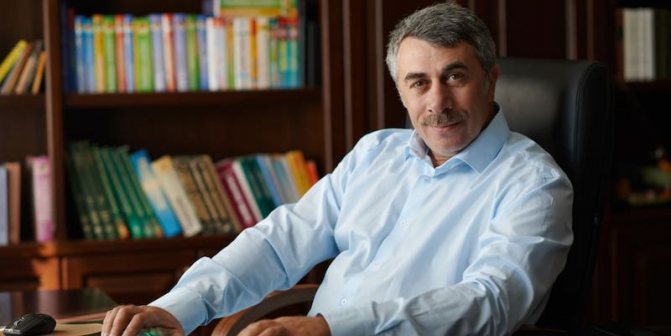
In Komarovsky’s opinion, if the baby sleeps with his head thrown back, you should not take any measures until the age of three months, since all children throw their heads back during this period. In addition, you can easily cause harm when interfering. The only safe way is baths with medicinal herbs, which should be done daily before bedtime. Add decoctions of string and chamomile to the bathing water.
When is it necessary to consult a neurologist?
A doctor's help will be required if the birth was difficult, since there is a high probability of injury, which may cause abnormalities to develop. The sooner the child is shown to the doctor, the sooner the diagnosis will be made and treatment prescribed; there will be fewer consequences, complications will not be as dangerous as if there is a delay. It is especially important to show the child to the doctor in a timely manner if, after childbirth, hematomas remain on the head, or if developmental disorders of the central nervous system organs are diagnosed.
It is necessary to show the baby to a specialist if there are signs of hypertonicity. If the child arches while lying on his side, there is decreased interest in food, low activity and frequent regurgitation, one limb moves worse than the other, it is also important to start treatment on time. In addition, a situation when a baby shakes its head from side to side in its sleep, or when the position of the head changes, a crying baby’s arms and legs begin to shake, is considered an alarming symptom.
You can consult a doctor for prevention if parents are not sure about the nature of the observed phenomenon. The doctor will tell you whether there is a pathology. If the doctor does not find any dangerous abnormalities, but the parents are still worried, you can visit another specialist and get a second opinion. This will help avoid medical errors and incompetence.
When to worry
Often parents simply do not notice that the child throws his head back. Especially if the baby does this in his sleep or during a tantrum. Often young mothers think that their baby is being capricious.
As experience shows, it is better to contact a neurologist once again. If you delay the diagnosis of such phenomena, the consequences may not be comforting.
Serious causes include: birth injuries, difficult childbirth (consequences of a hematoma on the head of a newborn), disorders in the development of the central nervous system. Such reasons can lead to the baby throwing his head back towards the back for a long time.
Worries, it is worth it if the phenomenon is accompanied by arching of the body, crying, hypertonicity of the muscles. You should consult a doctor if:
- The child throws his head back, and at the same time he has no appetite, lethargy, and regurgitation after eating.
- The baby arches, lying on his side.
- When a baby cries, he begins to change the position of his head and his limbs begin to shake.
- Hypertonicity appears.
- One of the limbs moves worse than the other and is in a different position.




